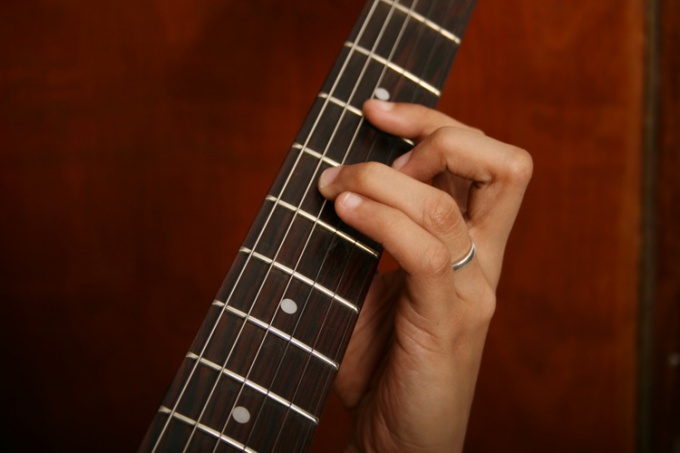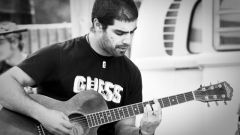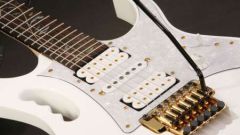You will need
- patience, perseverance, inspiration
Instruction
1
To start, select a guitar. To learn to play, of course, it will be easier on an acoustic guitar: the strings and the frets on it are spaced a little farther apart than the electric guitar. Although softer strings on the guitar.
2
Choosing the tool, guided by their own preferences: shape, size and color of the soundboard of a guitar can be anything, but the guitar should be comfortable to hold in hands. When playing the guitar, her weight transferred onto the right knee on top of the soundboard follows the right hand. The left hand should be completely free. It is preferable, of course, to take a classical guitar or a Western.
3
The main thing you need to pay attention, in addition to convenience – the height of the strings above the fretboard. The higher above the fretboard the strings are located, the harder it will be to set and clamp the chords.
In addition, swipe your fingers on the edges of the neck – iron nut should not stick out of the fretboard on the sides, otherwise when you play the guitar you can seriously injure your fingers.
In addition, swipe your fingers on the edges of the neck – iron nut should not stick out of the fretboard on the sides, otherwise when you play the guitar you can seriously injure your fingers.
4
And, of course, the guitar must build. Ask a friend who knows how to play the guitar, to go with you to the store, configure and play the guitar. Sound extracted of the chords should be clean and conform to the truth.
5
So, the guitar is selected. The first thing you must learn to do is to configure your guitar. Especially the new strings have the tendency to stretch the game and the tool from this upset. You can tune a guitar by a tuning fork, electric tuner or online via the Internet.
To check the tuning of the guitar you need before each lesson, so as not to ruin your hearing: it is known that it is impossible to restore.
To check the tuning of the guitar you need before each lesson, so as not to ruin your hearing: it is known that it is impossible to restore.
6
Now there's a tough job to develop under finger chords. To do this, put your index finger on the first fret sixth string near the nut, hold the string and extract the sound with the thumb of the right hand. Removing index on the 2 fret 6 strings put the middle finger, repeat the exercise, then hold down the 6th string ring finger on the 3 fret and little finger on the 4 fret.
Remove fingers from the strings, removing the sound, in reverse order: from the little finger to the middle.
Remove fingers from the strings, removing the sound, in reverse order: from the little finger to the middle.
7
Fingers that know no strings, the first time will hurt badly and not to listen, but don't lose your perseverance. As soon as the left hand is very tired, rest a while, then back to the lesson.
All great guitarists do this exercise that allows you not to lose dexterity.
All great guitarists do this exercise that allows you not to lose dexterity.
8
You can pick up guitar scales and practice them: emit sound to keep you entertained and allow you to continue training. Or ask musician friends to show you simple melodies, playing too much. It is playing Robin, you'll quickly develop fingers.
9
Remember that the sound is derived as follows: the thumb of the right hand is "working" with the sixth and fifth strings. Index finger on the fourth string. Average – with a third, ring – and little finger with the first.
10
After the fingers are more or less easy will be the right chord, move on to chords. For the first time enough to learn 10 chords to find the most simple melodies.
11
To the musical notation go when a little will begin to understand chords and be ready for it. Many newbies are so scare notes that the inspiration to learn comes to naught, the guitar is thrown immediately and for years not taken in hand.
12
Try to do at least two hours per day in the first month, and then, when the fingers will zarubey, you can increase the lesson time up to 4 hours a day. The more often and longer you will take in hands a guitar, the faster you will learn to play it.
Play, and all you get!
Play, and all you get!




